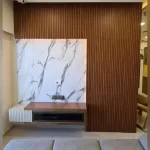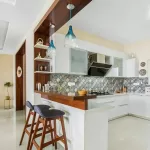Designing a Children’s Bedroom in Small Homes: Creative Ideas for Space Optimization
Creating a functional and fun children’s bedroom in small homes can be challenging but immensely rewarding. With the right strategies, you can transform limited space into a cozy and imaginative haven for your kids. From smart furniture to creative decor, a well-planned children’s room can cater to both their comfort and developmental needs.
Key Considerations for Children’s Bedrooms in Small Homes
1. Space Optimization
- Use bunk beds or loft beds to save floor space while providing separate sleeping areas for siblings.
- Install under-bed storage or drawers for toys, books, and seasonal clothes.
- Choose foldable or multifunctional furniture like desks that double as storage.
2. Zoning for Activities
Designate areas for sleeping, studying, and playing. For example:
- A fold-down desk or a wall-mounted table can serve as a study area.
- Use a small rug or floor cushions to create a play zone.
3. Storage Solutions
- Vertical Storage: Utilize shelves, hooks, and cabinets mounted on walls to keep the floor space clear.
- Modular Storage: Opt for stackable bins or custom cabinetry that grows with your child’s needs.
- Hidden Storage: Benches with built-in storage or ottomans with removable lids are great for small rooms.
4. Functional Decor
- Use chalkboard walls or magnetic paint for a creative and interactive feature.
- Install colorful pegboards for organizing stationery, hats, and other small items.
- Add hooks or cubbies near the door for backpacks and shoes.
Design Tips for Small Kids’ Bedrooms
1. Make It Light and Bright
- Use light, pastel colors to make the room feel larger and airy.
- Add mirrors to reflect natural light and visually expand the space.
- Choose furniture with a compact and minimal design.
2. Multipurpose Furniture
- A loft bed can incorporate a desk or seating area underneath.
- A bed with a trundle can accommodate sleepovers without taking up extra space.
3. Creative Storage Solutions
- Incorporate shelving around door frames or windows.
- Opt for hanging organizers behind doors or on closet rods.
4. Personalization
- Decorate with their favorite themes, like superheroes, space, or nature.
- Use removable wall decals, posters, or string lights for personalization without commitment.
Small Bedroom Layout Ideas
For a Single Child
- Place the bed against the wall to maximize open floor space.
- Use the vertical space above the bed for shelves or storage.
- Add a compact desk and chair in a corner for homework.
For Siblings Sharing a Room
- Opt for bunk beds or twin beds with shared storage in between.
- Divide the room visually with rugs or curtains to give each child their own space.
- Provide personalized storage bins or labels to keep items organized.
For Toddlers
- Keep furniture low to the ground for easy access.
- Use colorful bins or baskets for toys that are accessible and safe.
- Choose convertible cribs or toddler beds that can adapt as they grow.
Decor and Styling Ideas
1. Wall Decor
- Paint one wall in a bold color or use a themed wallpaper.
- Hang framed artwork, kids’ drawings, or DIY crafts for a personal touch.
2. Textiles and Accessories
- Use themed bed linens, cushions, and curtains to tie the decor together.
- Add a small canopy or teepee for a cozy reading corner.
3. Playful Additions
- Incorporate climbing walls, slides, or small activity zones if space allows.
- Add a bean bag or a floor cushion for a cozy seating option.
Safety Tips for Children’s Bedrooms
- Anchor heavy furniture like bookshelves and dressers to the wall to prevent tipping.
- Use non-toxic paints and materials for furniture and decor.
- Ensure electrical outlets are childproofed, and cords are safely tucked away.
Conclusion
Designing a children’s bedroom in a small home is all about creativity, organization, and functionality. By making the most of vertical space, investing in multifunctional furniture, and incorporating playful decor, you can craft a delightful room that grows with your child. Small spaces can still be big on style and comfort—let your imagination lead the way!


